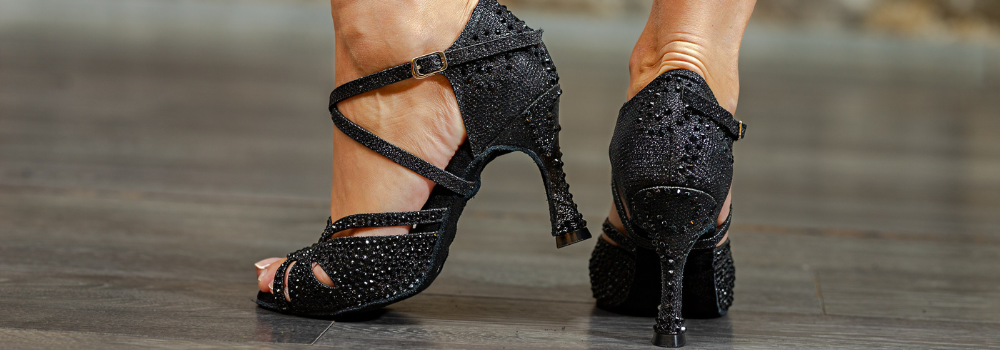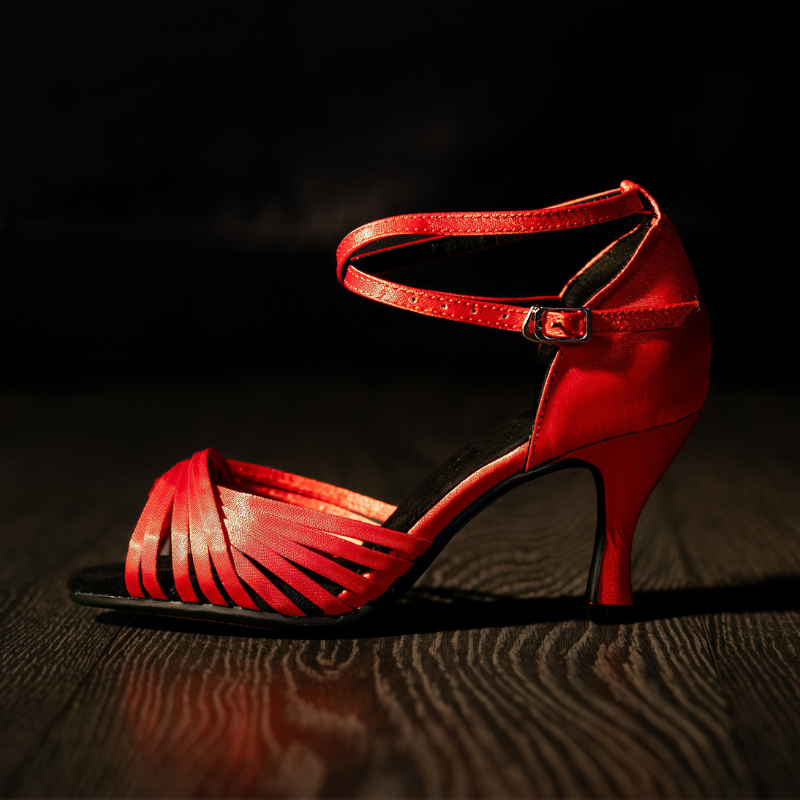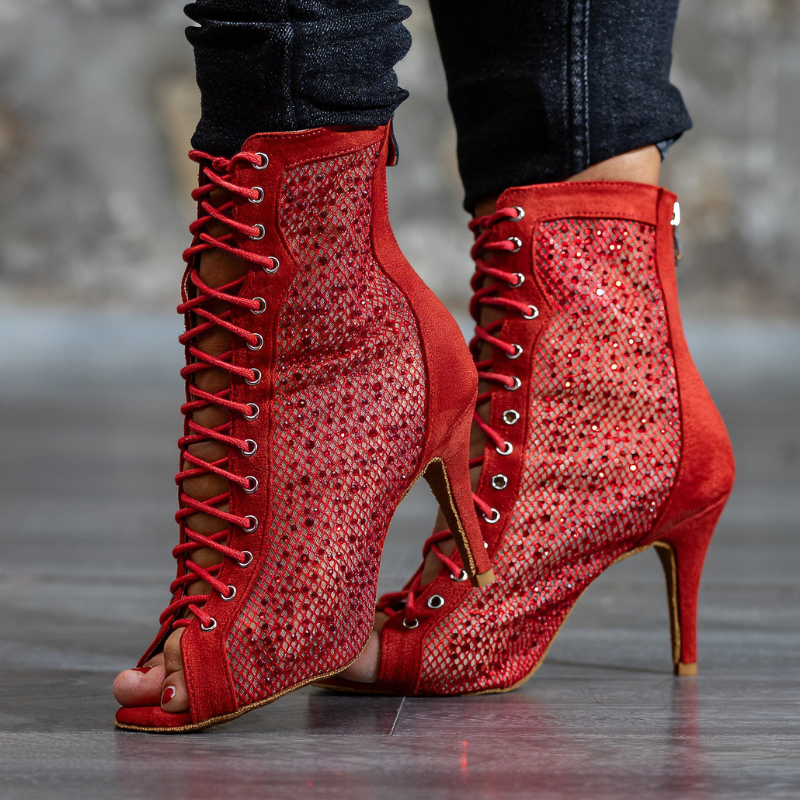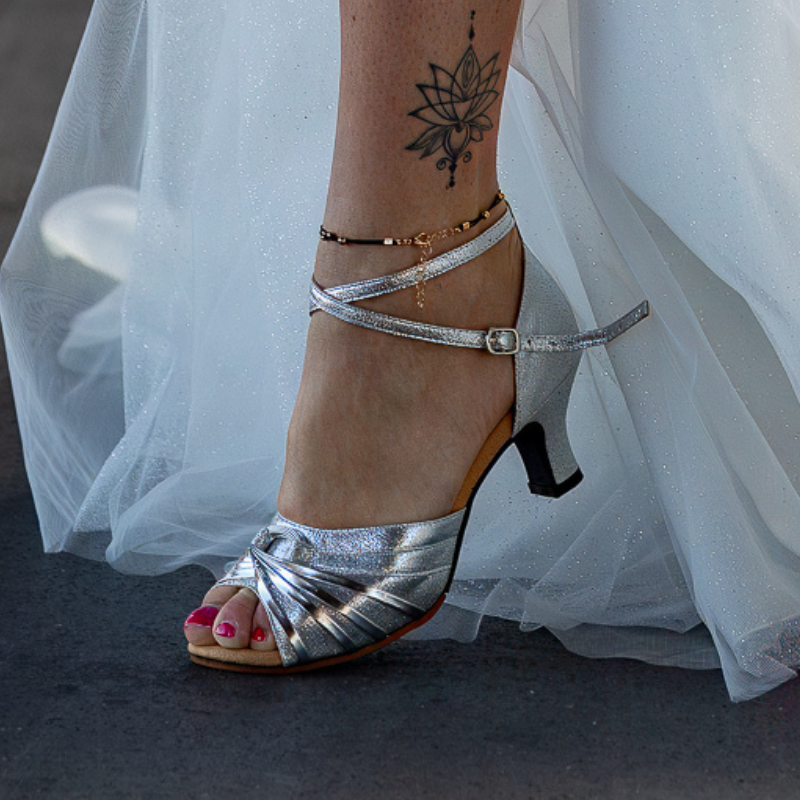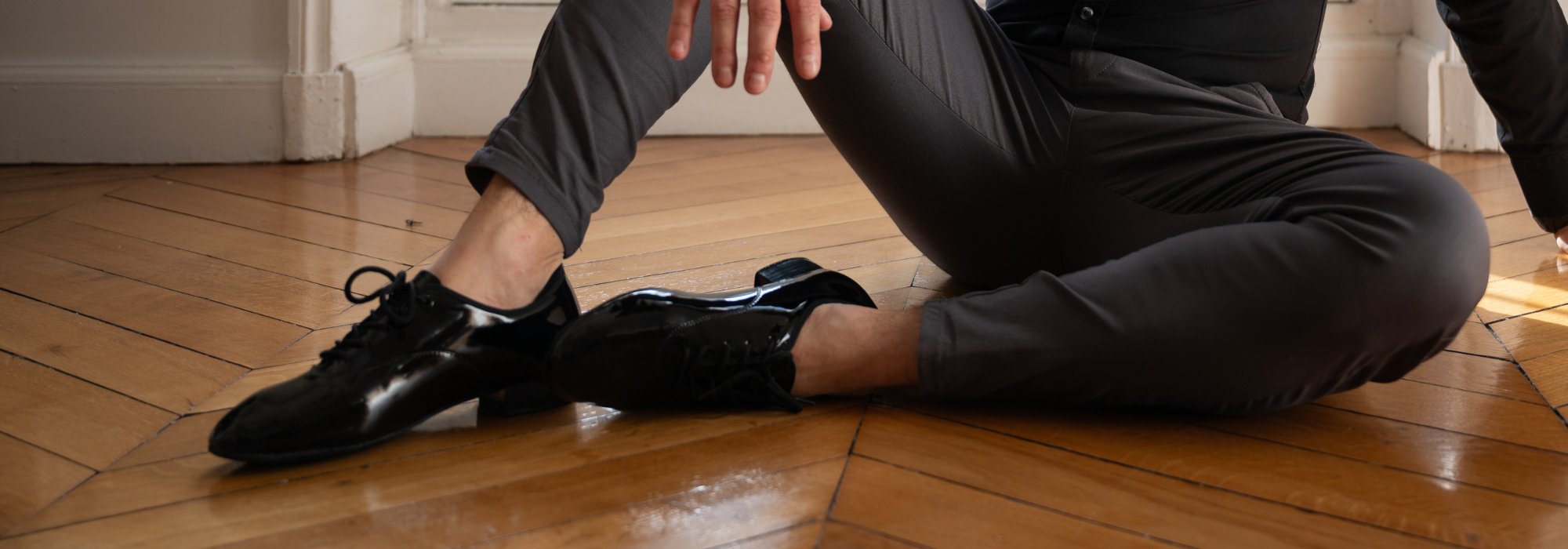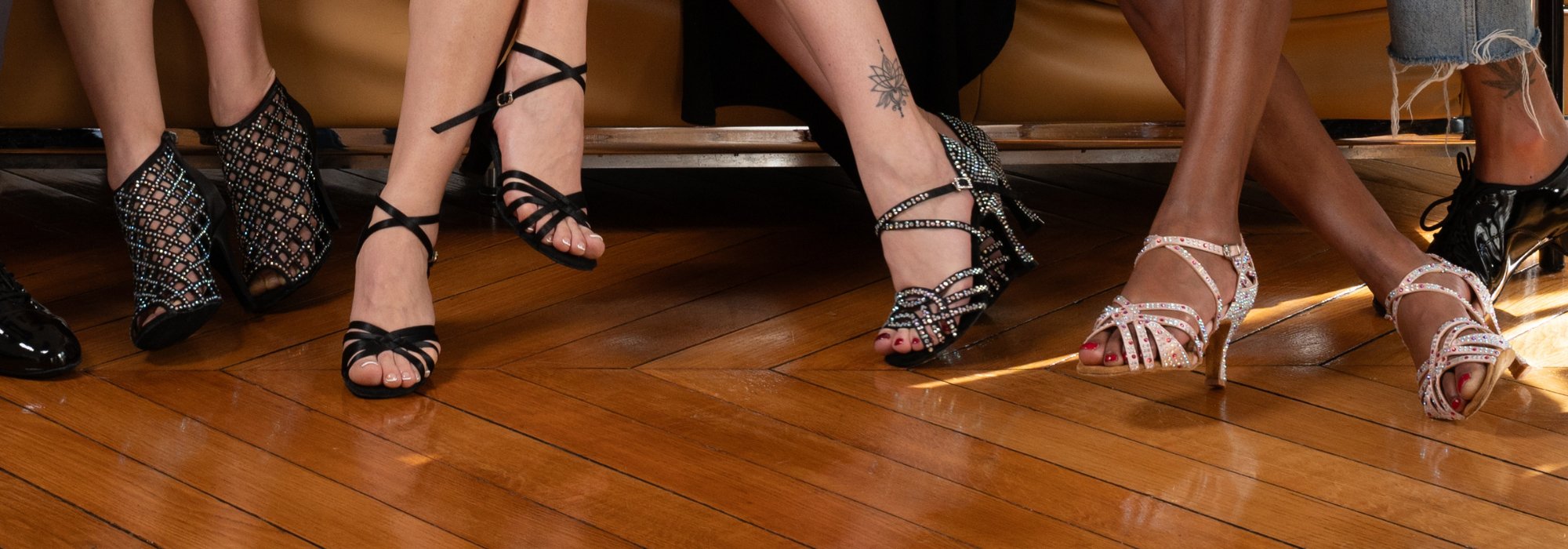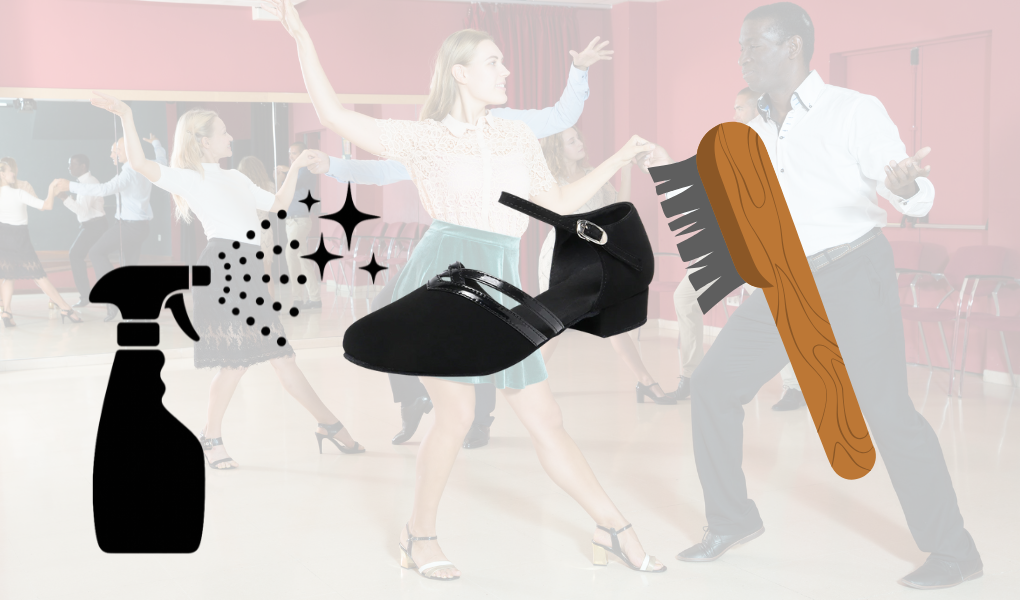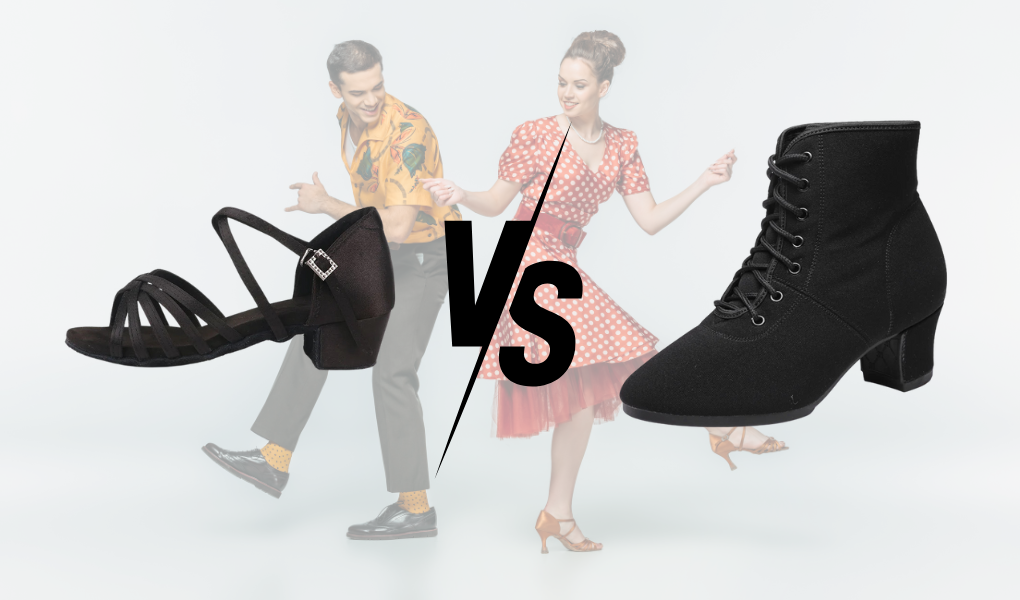What heel to dance?
YOU Dance start And you wonder what Talon Choose To maximize your comfort and performance? Do you hesitate on the heel height, the type of sole or the model that would best suit your level? This guide is for you!
Whether you are a beginner, intermediary or dancer (s), the choice of heel is huge for your safety, your posture and your dance style.
To start in dance with heels, a minimum height of 2 to 4 cm is often recommended to obtain good support and fully feel the movements. If you are comfortable in everyday heels and have good flexibility of the ankles, you can consider starting with a heel higher like Stiletto.
In this guide, you will discover:
- The different types of heels according to your level of experience
- How to choose the right height for your dance style
- Soles and materials to favor for optimal comfort
Ready to master the art of dance in heels? Let's start!
The different types of heeled shoes

1. flared shoes
THE Shoes flared in heel offer a wider base at ground level, which provides increased stability. Their type of heel is particularly adapted to beginners Or dancers who are looking for additional support during rotations and complex movements. It is well suitable for Latin dances such as salsa, where good grip and control are essential.

2. Stiletto shoes
THE Stiletto shoes in heel, finer, bring undeniable elegance and refinement. They are prized by experienced dancers because they accentuate the leg line And offer a slender silhouette. However, they require a certain control and a good balance to avoid twists or imbalances. Their heels are adapted to artistic performance or dances where aesthetics plays an important role (such as tango or bachata).

3. Thick heel shoes
THE Thick heeled shoes offer a compromise between stability and style. They bring a solid base while allowing fluid and precise movements. Their type of heel is perfect for dancers who wish to combine aesthetics and safety, especially during dances that require rapid travel or support changes.
Choose the height of the heel according to your dance type
The height of the heel is a key element to guarantee optimal comfort and good performance on the dance floor. The choice depends on your dance style, your level of experience and your personal comfort.
-
Low heels (about 2-4 cm) : They are suitable for beginners and dancers who are looking for better stability. They are Ideal for learning the bases without exerting too much pressure on the joints.
-
Average heels (5-7 cm) : They are recommended for dancers who already have some experience. They offer a good balance between stability and flexibility To perform complex movements.
- High heels (7-8.5 cm) : For many dancers, a Talon from 7 to 8.5 cm represents a good compromise. It helps maintain a perfect balance between comfort, aesthetic and performance. This height is particularly suitable for Latin dances where the fluidity of movements is essential.
Which heel to choose according to your level of experience?
1. Beginners
When you Dance start with heels, it is essential to prioritize and the stability. The flared and thick heels offer a wider base that limits the risk of imbalance.
Start with Low heels (2-4 cm) To learn how to control your supports without excessively forcing the joints. The objective is to develop your insurance while minimizing the risk of injury.
2. Intermediate level
Once you have acquired some experience, it's time to take up the challenge with Average heels (5-7 cm). This height allows you to work on Flexibility of your movements while retaining a adequate stability. Stilets at medium height are ideal for improving your balance, refining your posture and diversifying your dance style.
3. Confirmed
For confirmed dancers, High heels (7 cm - 8.5 cm) are an excellent choice to enhance your performance. The stilettos offer an elegant silhouette and strengthen the fluidity of your movements. However, this height requires perfect control of your balance and technique to Avoid twists or imbalances.
Choice of materials and soles for heeled dance shoes
1. The Sweden sole
There Sweden sole is particularly recommended for dances practiced on smooth floors such as parquet, lino or tiles. She offers a Excellent compromise between grip and slide, And Facilitates rotations while allowing a Good support control. However, it is crucial to note that this sole is not adapted to the outside because it wears out quickly in contact with concrete, gravel or wet surfaces.
If you plan to dance only inside, this is the best choice to ensure good supports.
2. The sole “All Sols”
For dancers who want versatility of use, the sole all floors is a wise choice. She offers a best resistance to external environments while being more flexible than conventional soles. It can adapt to a mixed practice (interior and exterior), which makes it ideal if you are looking for a more sustainable solution without sacrificing the flexibility necessary for dance.
3. Materials
The maintenance and comfort of your heeled dance shoes also depend on the choice of materials. Favor shoes with:
-
Soft leather or material Breathable that adapts well to the shape of the foot and offers optimal comfort during dance.
-
Adjustable laces or flanges which allow the shoe to be adjusted to perfection to avoid friction or the risk of slipping.
4. Maintenance
-
Maintain your Sweden sole : Use a special brush to clean the sole and avoid the accumulation of dust that can reduce adhesion.
-
For all soles, clean them regularly and avoid rough surfaces to extend their lifespan.
Errors to avoid when choosing the heel to dance
1. Opt for too high heels from the start
Choosing too high heels as a beginner is one of the most frequent errors. This can cause pain, imbalances, and increase the risk of injury. Start with low or medium heels To gradually develop your strength and balance.
2. neglect comfort and maintenance
Comfort is essential when you dance in heels. Avoid shoes without adequate support, like those devoid of adjustable laces or flanges. This could lead to slips, friction and injuries. Favor the models that wrap the foot well and keep the ankles.
3. Use shoes not adapted to dance
Wear city heels To dance can be very risky. These shoes are not designed to offer flexibility, maintenance and grip necessary for dance movements. Always opt for shoes specifically designed for dance.
4. ignore the quality of the sole
The sole plays a crucial role in performance and security during dance. A Sweden sole is ideal for indoor dances, while an all soil sole offers more versatility. Avoid rigid or slippery soles Because they can hinder your movements and train falls.
5. Do not take into account the size of the heel compared to your size
The ratio between the height of the heel and the size of your shoe is important. For small sizes, a heel too high can compromise the balance, while large sizes may require a specific heel height to maintain a good posture.
6. Do not ask for the advice of a professional
If you take dance lessons, It is essential to consult your teacher before buying a pair of heels. Each dance style and each level of experience may require a different type of heel. An experienced professor will be able to direct you to the choice most suited to your practice.
By avoiding these current errors, you will optimize your learning to dance in heels, improve your technique, and minimize the risk of injury. The choice of heels is a crucial step for any dancer or dancer, so take the time to opt for what best suits your body and style.
Ready to choose the type of heel that suits you best?
Here you are at the end of our guide! Now you know All the essential elements to choose the perfect heel Depending on your level and dance style. Whether you start with flared heels to ensure your stability or opt for stilettos in order to enhance your performance, The choice of heel is fundamental For your comfort, safety and artistic expression.
Remember that the key isListen to your body and progress at your own pace. Each step, each movement is a new opportunity to learn and surpass yourself on the track.
Ready to find Your ideal pair ?
→ Discover our Different types of heels By clicking on the link here present. If you don't know which ones to choose, Do not hesitate to contact us.
